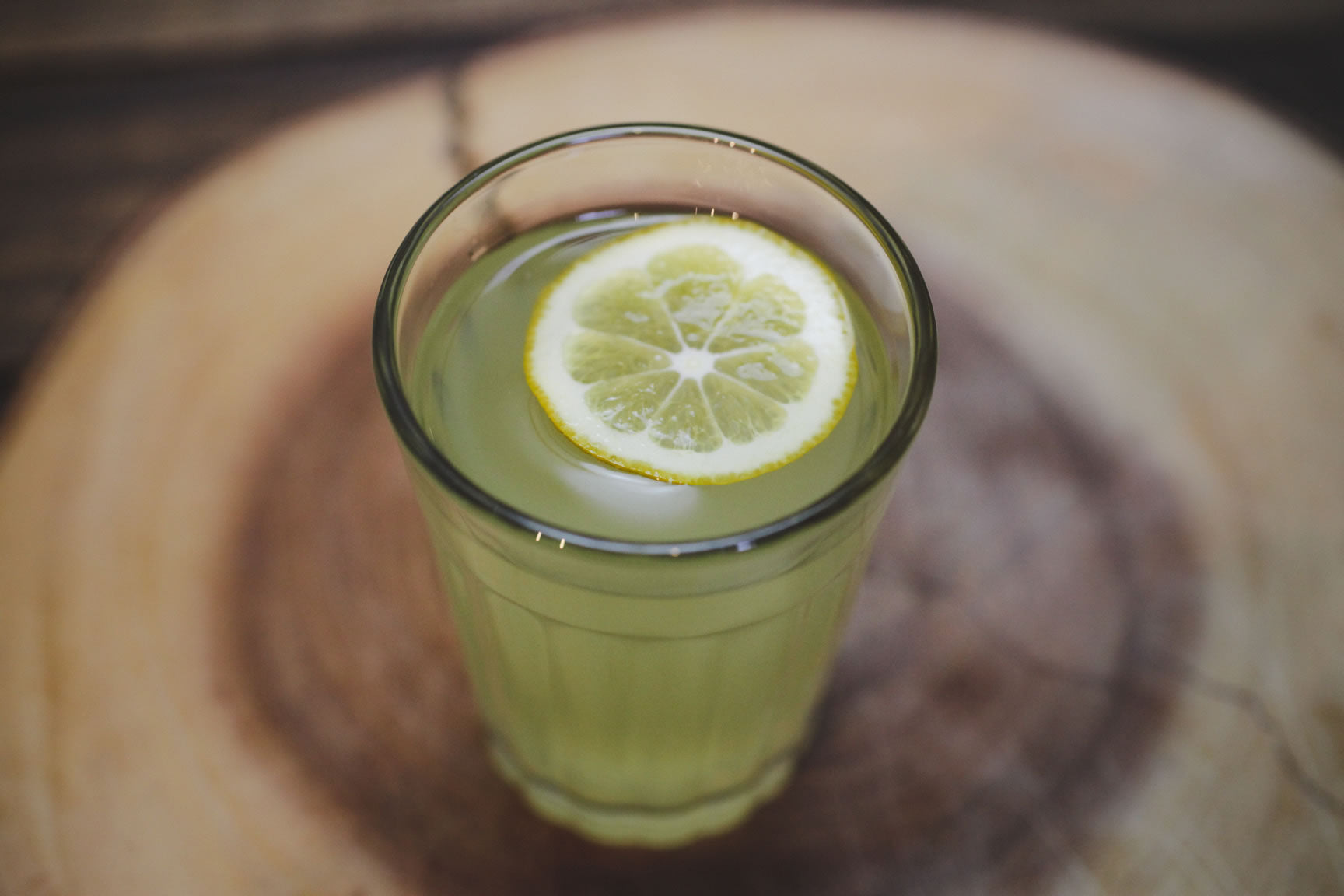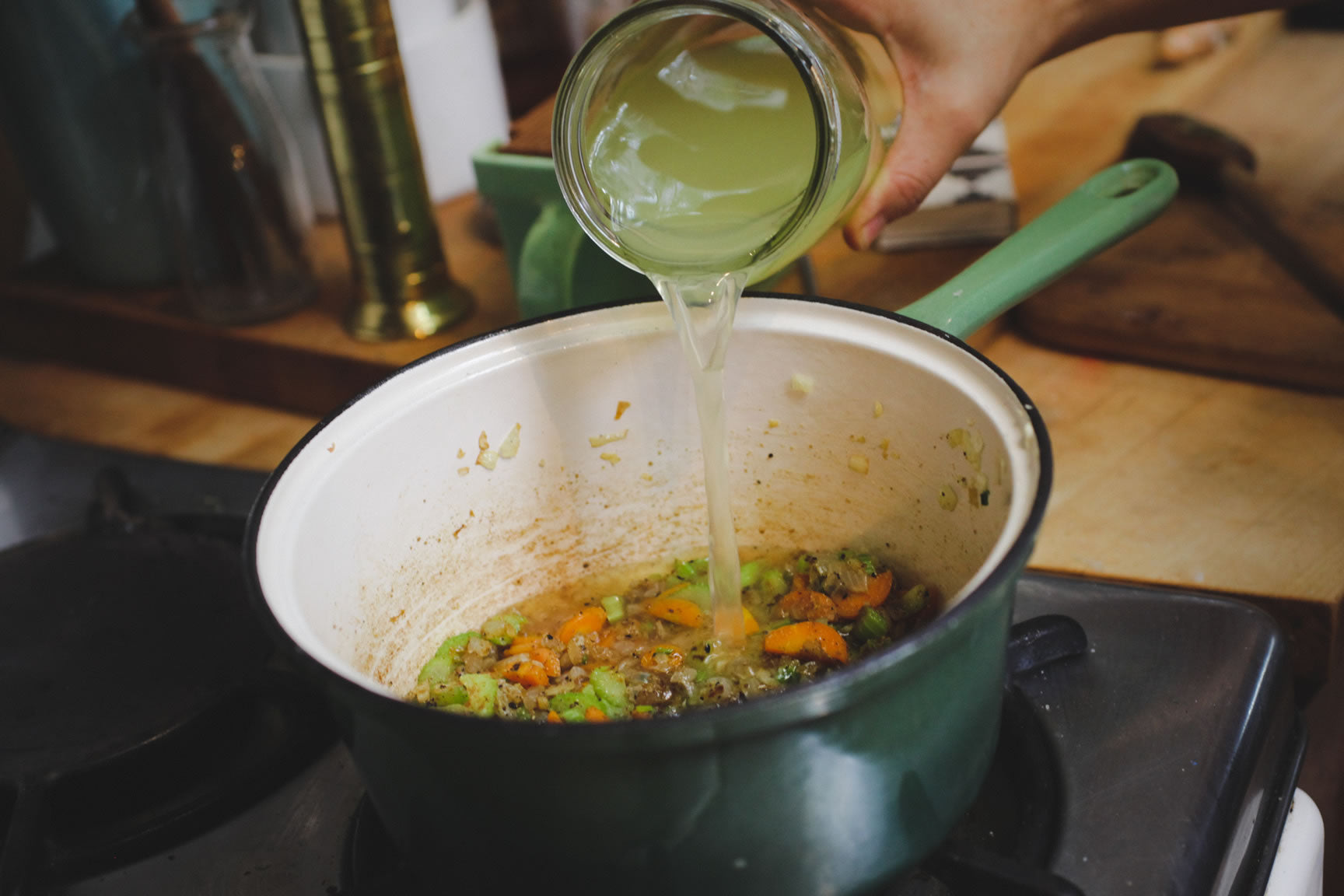- Continue Shopping
- Your Cart is Empty
What to Do With All That Whey: Using Leftover Whey

What You'll Need
Equipment for Lentils:
- heavy bottomed stock pot
- colander or strainer for draining mixing spoon
Equipment for Lemonade:
Ingredients for Lentils:
- 2 cups dry french green lentils soaked over night in fresh water (or whey)
- 1 quart fresh whey left over from cheese making plus enough to cover dried lentils if you are soaking in whey
- 2 Tbs ghee
- 1 cup finely diced yellow onion
- 1/2 cup finely diced celery
- 1/2 cup finely diced carrots
- 1 tsp ground cumin
- 1 tsp ground coriander
- 1 tsp black pepper
- 1 tsp sea salt, plus more to taste
- 1 Tbs minced fresh turmeric root
- 1 pint fresh whey from cheesemaking
- 1 cup water
- 1 tsp maple syrup plus more to taste
- 1-2 tsp fresh lemon juice
Ingredients for Lemonade:
If you make cheese, or Greek yogurt, or any number of other dairy ferments, you’ve no doubt been left staring at a pot of lovely light green whey. What to do with it? Perhaps you’ve heard strange rumors; should you put this whey in sauerkraut? Turn it into soda, or put it in soups or bread? Sit on a tufted footstool and eat it, wary of spiders?
Well, as it turns out, there are different kinds of whey, and therefore different applications that are suitable for using it. So first, determine what sort of whey you have.
Whey left over from making yogurt, or hard cheeses, is still biologically active, whereas whey left over from making mozzarella, or farmer’s cheese, is not. Because the processes in making yogurt and most hard cheeses only heats the milk and cultures to around 100°F, the live active active cultures are left alive and intact. The whey left over from these types of cheesemaking is suitable for all sorts of uses which take advantage of it’s “culturally active” properties. This is the whey you want to use if you want to initiate fermentation, in such applications as beet kvass, sauerkraut or other vegetable ferments, or bread making. (Please note that you do not *need* whey to make kraut, or indeed any of these ferments; it is simply another time-tested tradition, with it’s own benefits and considerations.)
Whey that has drained from other cheeses, such as farmer’s cheese, or mozzarella, will have been heated to a higher temperature, and may have had acids such as vinegar or lemon juice added to it; this whey, although it is not probiotic, still contains nutrition and has several other uses, which we explore below.
Over to You
French Lentils with Whey and Fresh Turmeric
Soaking lentils (or any legume) in whey before cooking makes them more digestible; the lentils begin to germinate, and in the process, the vitamin content increases. Vitamin C, B2, and B6, are all increased, as well as carotene. Further, the enzyme inhibitors that are present in unsprouted lentils are neutralized, and other enzymes that aid digestion are activated, making them easier to digest.
These are benefits that accrue whether the lentils are soaked in water or in whey; however, soaking the lentils in whey adds another layer of nutrition. The whey adds protein, and a complex, subtle flavor to the lentils.
Turmeric is a delicious and powerful root, which is also anti-inflammatory and a digestive aid; it is added at the end of the process to preserve its vitality.
Time: Over night soaking, plus 1 hour
Serves 6
Method:
1) Soak lentils
Pour your dried lentils into a bowl and cover with cool water or leftover whey. Soak overnight.
The following day, rinse and drain lentils. Set aside.

2) Sweat vegetables
In a heavy bottomed stock pot, heat ghee over medium heat. Add onions and sweat until translucent.
Add celery and carrots to onions and sauté 5 minutes.

3) Cook lentils
Add lentils, whey and spices to sautéed vegetables. Stir to combine.
Simmer lentils gently 40 minutes or until tender. Add more whey or water if needed to achieve desired texture.

4) Add tumeric and serve
Remove from heat and stir in the fresh turmeric. Taste and adjust salt.Serve warm garnished with yogurt and cilantro leaves.

Whey Lemonade
It may seem strange, to think of whey as a drink, but in fact is a nutritious, beautiful liquid that can be utilized to make any number of healthful and delicious drinks. All of the flavors described here can be altered or substituted to suit your individual taste. This whey lemonade is perfect for kids or adults in the summer; light, refreshing, and secretly full of vitamins, minerals, even protein. Enjoy!

Method:
Strain the whey left over after making mesophilic cheeses, to remove any stray curds or milk solids.
Dilute the whey with 1 cup cool, fresh water
Add maple syrup and lemon juice to taste.
Serve over ice, with mint leaves as a garnish, if you’re feeling real fancy.
It’s part of our mission here at Mountain Feed to help you make delicious, sustainable, homemade food more often. Stop by and say hello on Facebook, Twitter, Instagram or Pinterest. Or, as always, you can do it the old fashioned way and come by the store to speak with one of our in-house experts.

